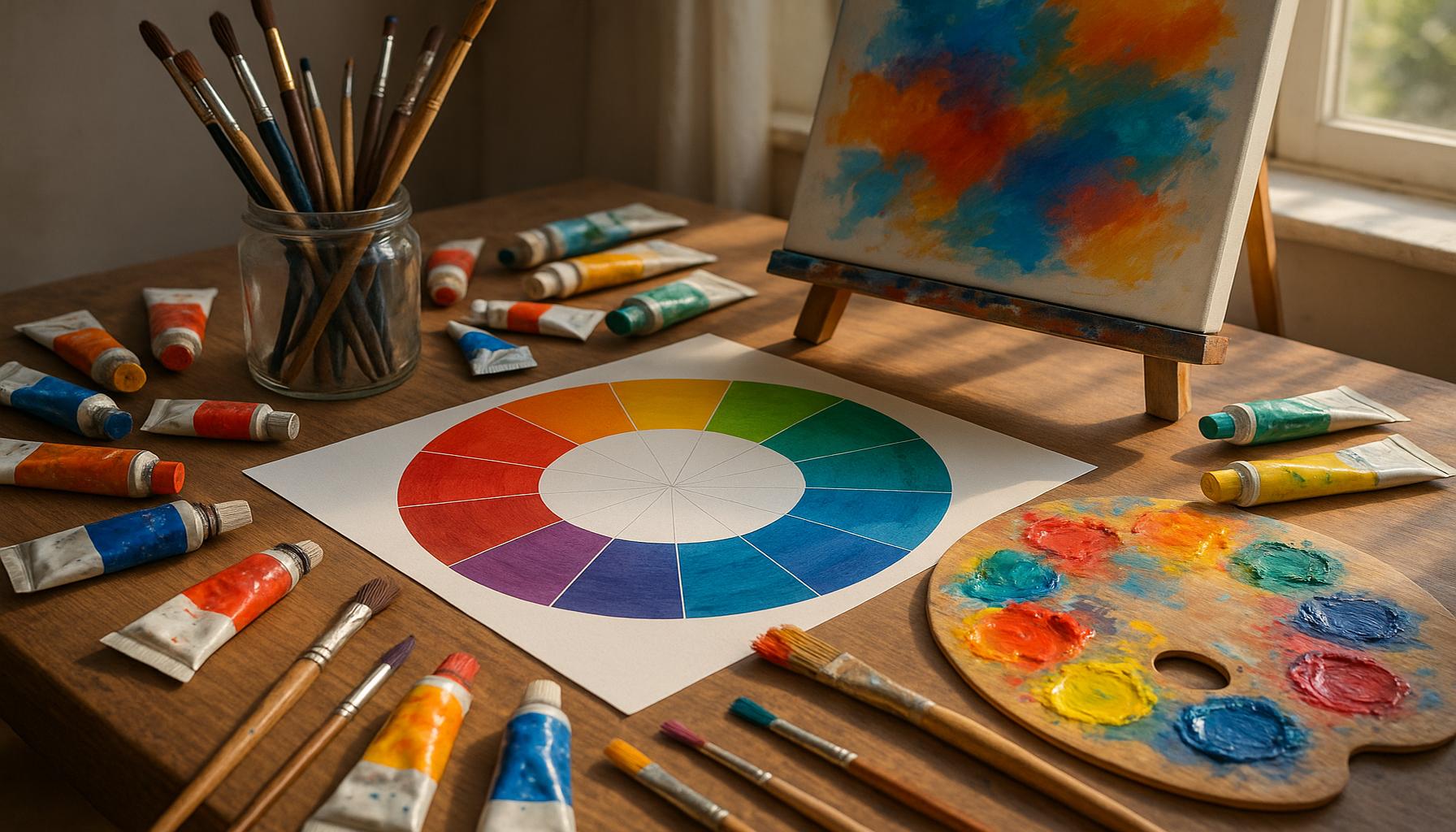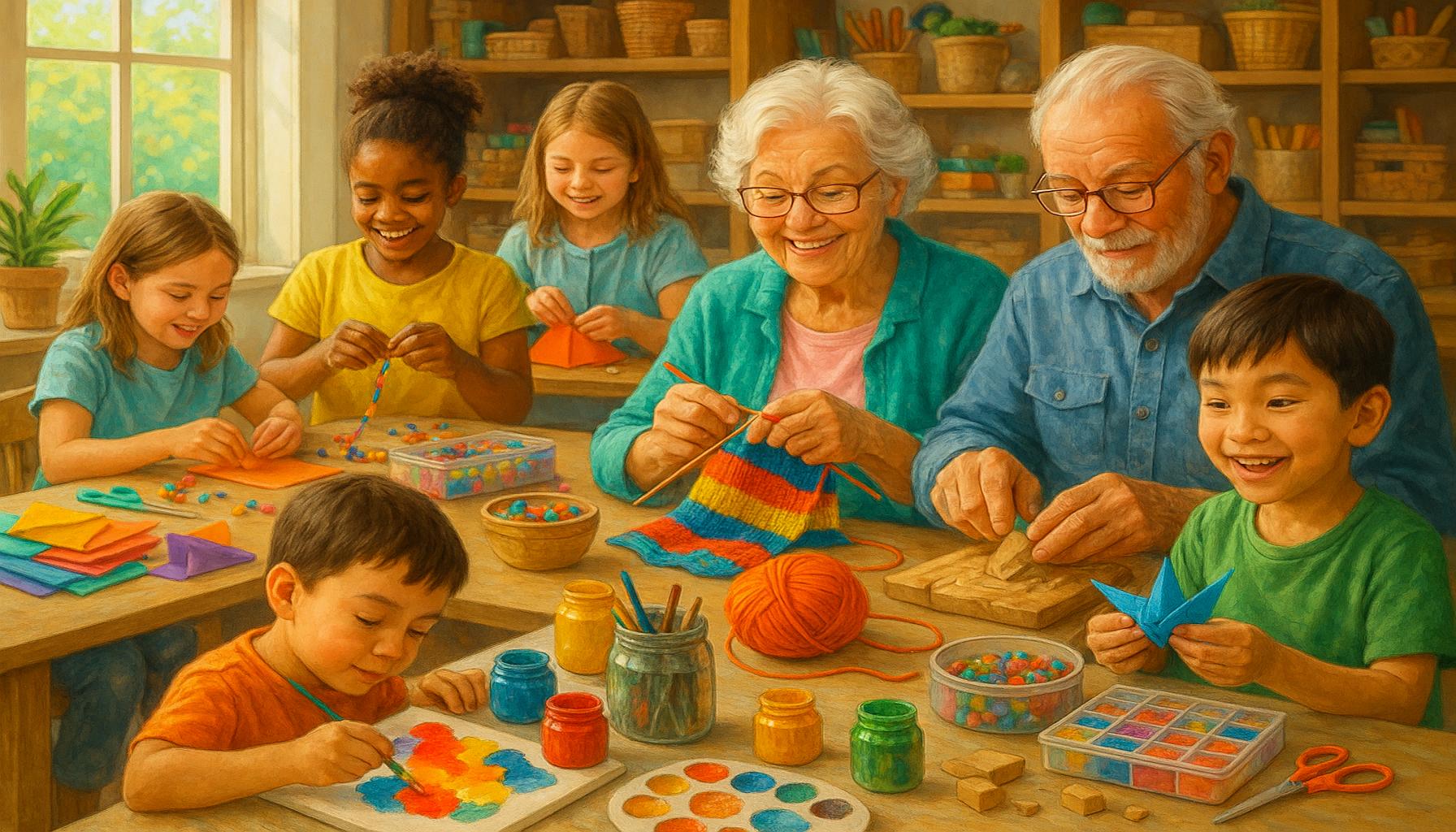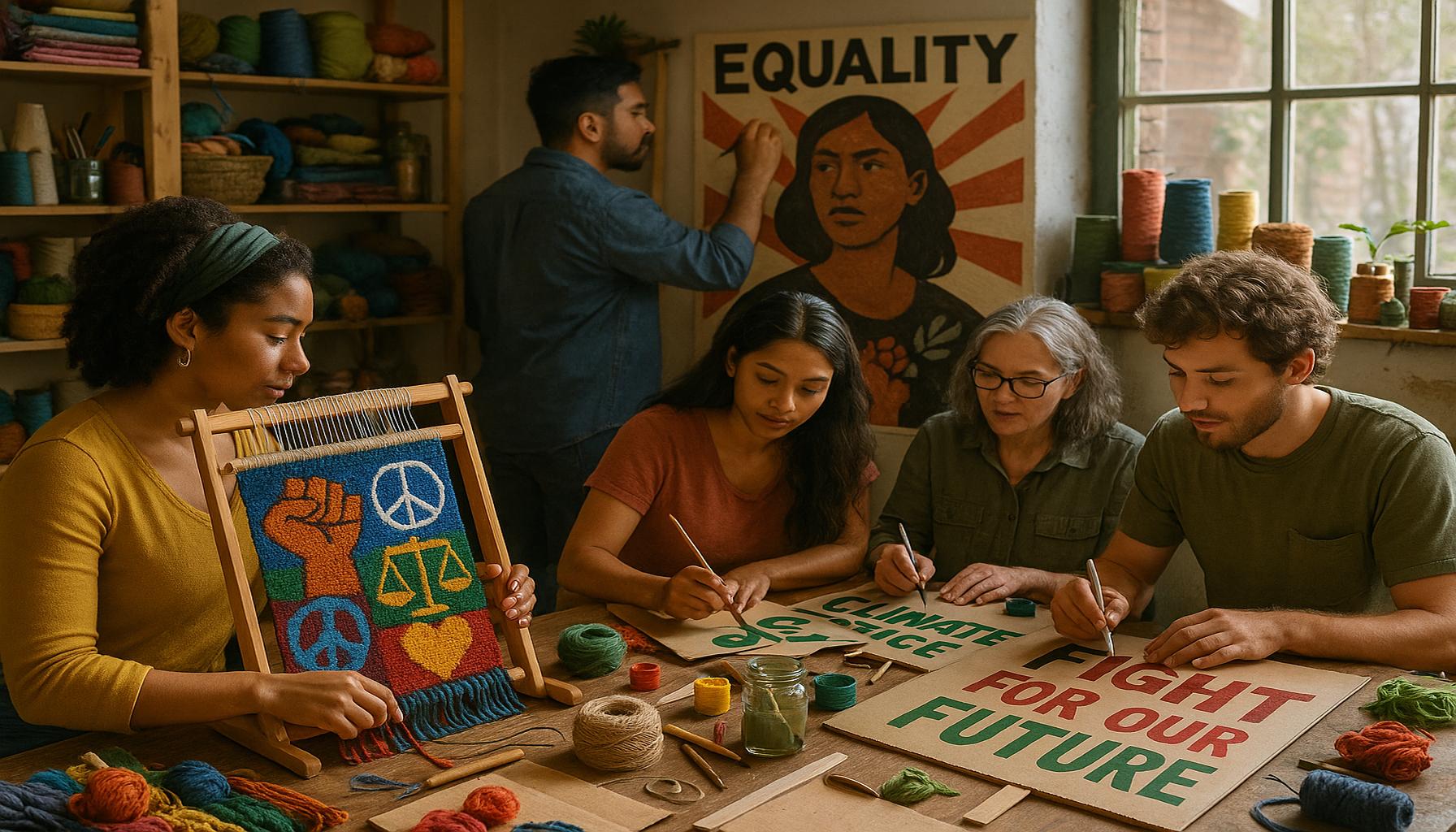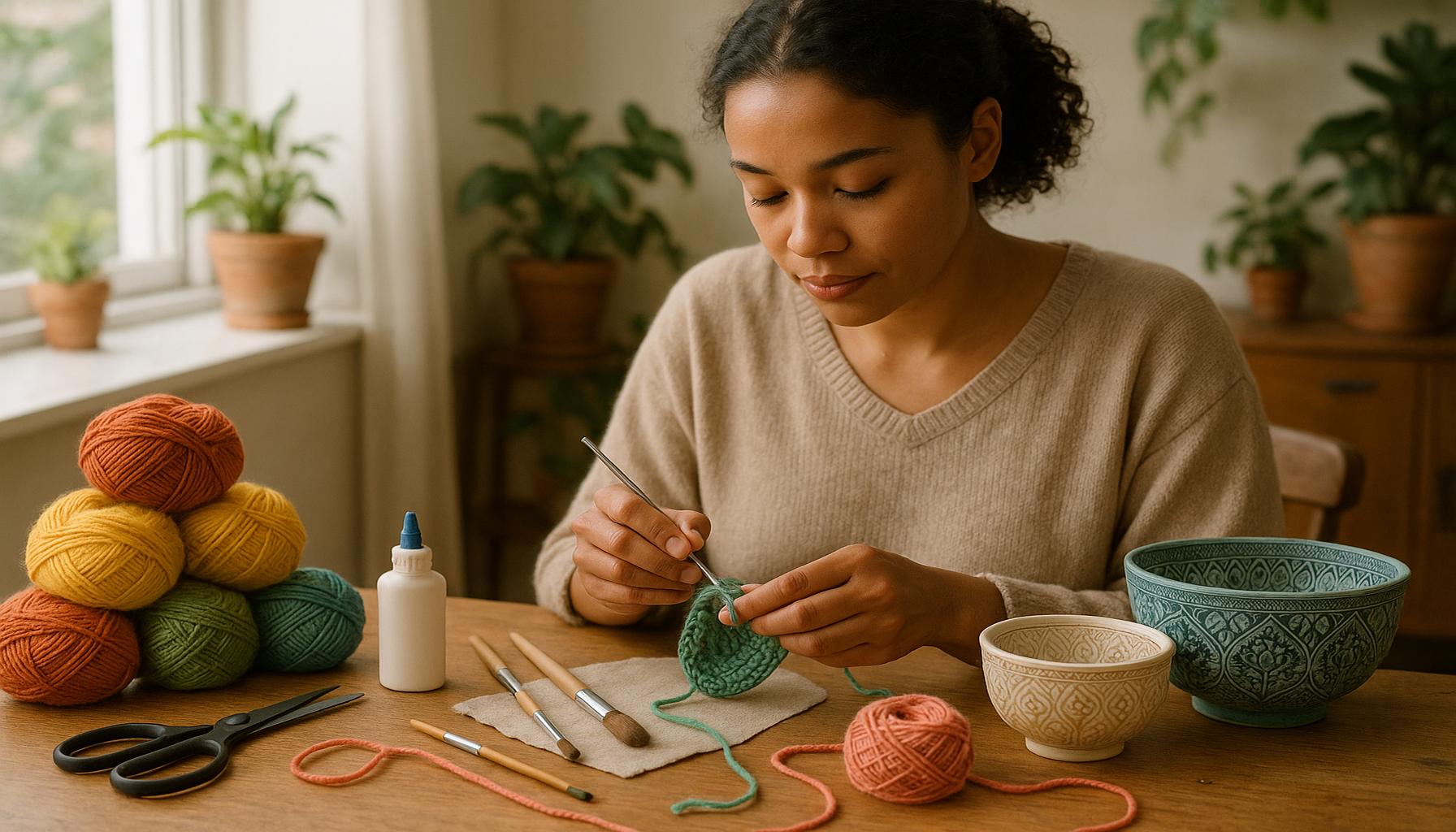The Role of Color Theory in Crafting: Enhancing Creativity Through Color Choices

The Language of Color in Crafting
Color is more than a visual element; it is a language that communicates feelings, ideas, and emotions. In the world of crafting, color theory plays a pivotal role in shaping creativity and enhancing artistic expression. By understanding how to utilize color effectively, crafters can elevate their projects to new heights, making their creations not only aesthetically pleasing but also deeply resonant with viewers.
When exploring the intricacies of color theory, it’s essential to consider its various components. For instance, the emotional connection that colors can evoke is profound. Different shades and hues trigger distinct feelings that can influence both the creator and the audience. For example, blue is often associated with calmness and serenity, making it an excellent choice for crafting items intended for relaxation, such as a bedroom pillow or a spa-themed gift basket. Conversely, red is known for igniting passion and energy, often chosen for projects that aim to evoke excitement or draw attention, like a vibrant birthday card or an eye-catching piece of wall art.
Symbolism and Meaning
Colors carry specific meanings and symbolism that can vary across cultures, but many resonate universally. For instance, green often represents nature, growth, and renewal, making it a fitting choice for environmental-themed crafts or projects promoting health and wellness. Yellow, on the other hand, signifies joy and positivity, ideal for celebratory decorations such as party banners or cheerful gift wrap. Understanding these associations allows crafters to make informed decisions that enhance the message they wish to convey through their work.
Finding Color Harmony
Another significant aspect of color theory is the concept of color harmony. Mastering the use of complementary, analogous, and triadic color schemes can elevate the visual appeal of designs. Complementary colors, opposite each other on the color wheel (like blue and orange), create dynamic contrasts, drawing the eye and adding excitement to crafts. Analogous colors (such as blue, blue-green, and green), which are next to each other on the wheel, create soothing and cohesive palettes, perfect for more subtle projects like home decor. Triadic schemes, involving three evenly spaced colors, can offer a vibrant yet balanced approach, ideally suited for more playful endeavors like festive decorations or children’s crafts.
Furthermore, color choices can significantly influence the outcome of crafting projects. They can make or break a design, guiding decisions in everything from home decor to personalized gifts. For instance, a carefully chosen color palette can transform a simple piece of furniture into a statement piece that enhances the overall aesthetic of a room. As you delve deeper into crafting, understanding color theory will not only enrich your creativity but also provide valuable insights into the emotional and thematic depth of your artistic journey. By experimenting with different colors and learning how they interact, crafters can unlock new avenues of creativity, ensuring that each project resonates with both the maker and the admirer.
DISCOVER MORE: Click here to uncover the therapeutic benefits of crafting
Understanding the Psychology of Color
Delving into the relationship between color theory and crafting reveals a rich tapestry woven from the threads of psychology, culture, and art. Each color not only captivates the eye but also taps into the deeper emotional and psychological responses we harbor. By leveraging these associations, crafters can transform their work from mere objects to profound statements that resonate with various audiences.
The psychology of color enables artists and crafters to choose colors that align with the feelings they want to evoke. Consider a few common associations:
- Blue: Often related to tranquility and stability, making it suitable for projects meant to evoke feelings of harmony, like nursery decorations or meditation tools.
- Green: Symbolizing health and freshness, it can enhance projects that focus on sustainability or well-being, such as eco-friendly crafts or organic skin care products.
- Purple: Linked to luxury and creativity, purple can be utilized to create elegant items, such as handmade jewelry or sophisticated wedding decorations.
- Orange: A color that radiates enthusiasm and excitement, perfect for energetic crafts, including party supplies or vibrant home decor pieces.
By understanding these emotional triggers, crafters can make informed choices that resonate with their intended audience. However, color psychology does more than dictate how a piece is perceived; it can also influence the creative process itself. A study from the University of Seattle found that certain colors can stimulate creativity. For example, exposure to the color yellow increased participants’ ability to think divergently—a key aspect of creative problem-solving—making it a fantastic choice for brainstorming sessions or experimental crafting.
Exploring Seasonal Colors and Their Effects
Another important consideration in color theory is the impact of seasonal colors on crafting. Each season carries a unique color palette, often defined by nature. In the spring, soft pastels like baby pink and light yellow dominate, symbolizing renewal and hope. Summer bursts with vivid hues like aqua blue and radiant orange, embodying warmth and vibrancy. Autumn introduces muted earth tones such as rustic browns and deep reds, evoking a sense of coziness and nostalgia. Finally, winter presents a diverse palette filled with cool shades of blue and silver, reflecting sharpness and tranquility.
Integrating seasonal colors into crafting projects can enhance their relevance and relatability. Crafting seasonal decorations, gifts, or apparel allows crafters to connect with the rhythm of nature and evoke emotions associated with specific times of the year. For instance, using rich, warm colors in fall-themed crafts can evoke sentiments of gratitude and togetherness, making projects more meaningful during the holiday season.
In summary, the use of color theory in crafting is essential for crafters looking to enhance their creativity and connect with their audience. By understanding the psychology of color and its seasonal influences, artists can make strategic color choices that amplify the emotional resonance of their work, ensuring it captivates and inspires.
The Psychological Impact of Color Choices in Crafting
When engaging in crafting, the psychological impact of color cannot be understated. Different colors evoke diverse emotions and responses, significantly influencing creativity and decision-making. For example, blue is often associated with calmness and tranquility, making it a popular choice for projects intended to evoke these feelings. Conversely, vibrant shades of red and orange can stimulate energy and passion, inspiring crafters to unleash their most dynamic creations. Understanding this psychological palette allows artisans to align their color choices with the desired messages or ambiances of their work.Moreover, exploring color harmonies—like complementary, analogous, and triadic schemes—adds another layer of depth to crafting. Crafters can manipulate color techniques to evoke specific atmospheres and heightened emotional responses from the audience. For instance, utilizing a complementary color scheme can create a striking visual contrast, capturing attention and enhancing the overall appeal of a piece. This strategic application of color theory enables artists not only to express individuality but also to communicate more effectively with their audience.Another significant aspect is the role of color in storytelling within art. Crafters often use color to symbolize themes or emotions, enhancing the narrative behind their work. By understanding the cultural significance and emotional connotations of colors, creators can craft pieces that resonate deeply with viewers. For instance, using shades of green may invoke ideas of growth and renewal, tapping into universal human experiences.In summary, color theory is an essential component in the crafting process, influencing not just the aesthetic appeal but also the emotional depth of creations. By carefully selecting hues and understanding their implications, artisans can elevate their projects and engage more profoundly with their audience.
DIVE DEEPER: Click here to discover the benefits of crafting on mental health</p
The Impact of Color Combinations on Crafting
While individual colors can evoke powerful emotions and moods, color combinations further expand the creative possibilities for crafters. Understanding how colors interact—both harmoniously and contrastingly—can elevate a project’s impact and aesthetic appeal. This concept, rooted in color theory, emphasizes the importance of choosing complementary, analogous, or triadic color schemes to create visually striking designs.
Complementary colors are located opposite each other on the color wheel, such as blue and orange. When used together, these colors can create a dynamic tension that captures attention while enhancing the vibrancy of a project. For example, a handmade greeting card featuring a deep blue base adorned with orange accents can evoke strong emotions of joy and warmth, making it especially suitable for celebratory occasions.
On the other hand, analogous colors are adjacent on the color wheel, such as green, blue, and teal. This combination promotes a sense of harmony and unity, often resulting in a more serene aesthetic. Crafting with analogous colors can be especially beneficial for projects intended to induce feelings of calm, like artwork designed for a spa environment or relaxation spaces. A well-balanced design using analogous colors may create serene landscapes or flowy fabric patterns that encourage reflection and tranquility.
Furthermore, triadic color schemes, which involve three evenly spaced colors on the color wheel, can inject vibrancy and excitement into crafting projects. For instance, pairing red, yellow, and blue can generate a playful, lively feel that is perfect for children’s toys or cheerful home decor. This approach not only creates visual energy but also allows crafters to experiment with various shades and tints, expanding their color palette while maintaining cohesiveness.
Utilizing Color Trends in Modern Crafting
In addition to understanding color theory and combinations, incorporating current color trends into crafting can significantly enhance the appeal of projects. Color trends often emerge from cultural shifts, fashion influences, and even social media movements. For instance, the Pantone Color Institute annually selects a “Color of the Year,” which has a profound impact on design industries, including crafting. In recent years, colors like Living Coral and Classic Blue have dominated various creative projects, from textiles to artworks, encouraging crafters to align their work with contemporary narratives.
Moreover, being attentive to seasonal color trends can help crafters stay relevant within a specific market. Popular color palettes vary for holidays and seasonal celebrations. During Halloween, for example, juxtaposing black and orange can lend a festive, spooky flair to crafts such as wreaths and decorations. For Valentine’s Day, soft pinks and reds create feelings of romance and love, ideal for handmade gifts or cards aimed at loved ones.
The concept of color trends extends beyond seasonal crafting; it’s also about sustainability. The rise of eco-consciousness has ushered in earthy tones like sage green and terracotta, connecting crafters with a movement aimed at environmental awareness. By using colors that reflect nature, crafters can enhance the emotional resonance of their projects while contributing to conversations around sustainability.
Understanding color theory, color combinations, and current trends is vital for crafters looking to enhance their creativity and craft distinctive pieces. By carefully considering the power of color, artists can transform their work from simple crafts into compelling narratives that connect and inspire. These insights not only elevate the overall aesthetic but also foster a deeper appreciation of the psychological and cultural implications of color in the art of crafting.
DIVE DEEPER: Click here to discover eco-friendly crafting ideas
Conclusion: The Transformative Power of Color in Crafting
In conclusion, the exploration of color theory in crafting reveals its profound influence on creativity and expression. By understanding how different color combinations—whether they are complementary, analogous, or triadic—can drastically alter the perception of a crafted piece, artists can elevate their work from mere decoration to a compelling narrative. Engaging with current color trends not only enhances the visual appeal of projects but also connects crafters to broader cultural and emotional contexts, making their creations more relevant and resonant.
Furthermore, as trends evolve, so too does the importance of sustainability in color choices. Utilizing colors that reflect nature allows crafters to embrace an environmentally conscious approach, ensuring that their work resonates with audiences who value sustainability. Crafting with intention—whether through seasonal palettes or contemporary hues—embodies a deeper connection to the materials and messages that craft conveys.
Ultimately, the role of color theory in crafting goes beyond aesthetics; it is a powerful tool for communication and emotional expression. By delving into the nuances of color and leveraging these insights, crafters can unlock limitless potential for creativity. As you embark on your next crafting journey, remember that every hue tells a story, inviting you to explore, experiment, and ultimately inspire others through the vibrant world of color.


